|
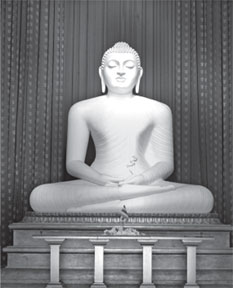 Ananda College at 125: Ananda College at 125:
A beacon to society
By Pramod DE SILVA
Stepping into Ananda College for the first time is one of my life’s
most precious moments. For me, that precious moment came in January 1981
as a Grade 6 student. Way back then, Ananda did not have a primary
section and classes ranged only from Grade 6 to 12.
I was fresh out of Asoka Vidyalaya, just a two-minute walk away. All
my brothers and even sister (!) had been students of Ananda (the school
used to have a very few girls from time to time), so getting into Ananda
was always a dream for me. My mother, who was a teacher at Ananda
College from 1968 to 1975, thought it was the most natural thing to
happen.
Ananda was both familiar and unfamiliar to me. It was familiar,
because my mother and brothers were there and they used to relate many
stories about the educational colossus that is Ananda. It was
unfamiliar, because I had never really been inside the premises, never
really felt the pulse of the school that celebrates 125 years just two
days from now, on November 1.
And when I finally did enter the hallowed grounds that had nurtured
many eminent Sri Lankans, it was a feeling like no other. Here I was,
just 12 years old, attired in the all-white school uniform, waiting to
discover the joy and purpose of being an Anandian. I was to tread on a
path that had been trodden by many others before me, a path that would
show me the way to become a good citizen replete with values.
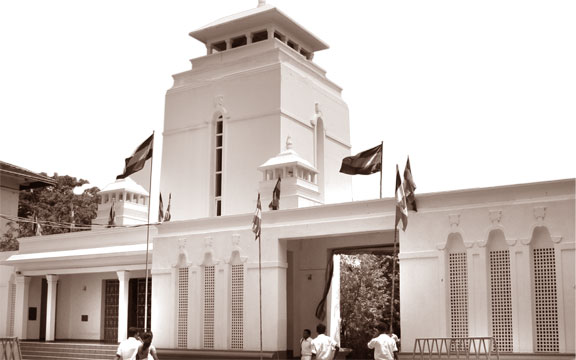 |
|
The shrine room and on
top right, the Buddha statue |
I might have been just one of the 5,000 students at Ananda that day,
but those first steps laid a solid foundation for the later years of my
life. One of my first sights at Ananda is one that I would never ever
forget: the serene Buddha statue at the College shrine. The Buddha
statue has a unique place at Ananda, whose motto is a great advice given
by the Enlightened One – Appamado Amathapadam, which basically means
that one should not hesitate to gather merit and follow the Dhamma.
Buddhism indeed plays a pivotal role in the life of an Anandian. That
was the very aim of the founder of the school, Col. Henry Steele Olcott
who saw the dire need for a school based on a Buddhist foundation for
the Ceylonese student fraternity. Ananda thus had a very humble
beginning on November 1, 1886, at 61, Maliban Street, Colombo with just
37 students, although the school was officially named Ananda College
only in 1895. Today, it is the leading Buddhist educational institution
in the country.
However, Ananda was always a microcosm of Sri Lanka itself. On my
very first day at Ananda, I became friends with several Tamil and Muslim
students. There were many Christians among my friends. In just a few
months, they were truly at home with the sentiments and traditions at
Ananda. All my classmates, regardless of their ethnicity and religion,
joined in the morning ‘Mal poojawa’ at the Shrine. That unity amidst
diversity was symbolic of Ananda.
One bedrock
If Buddhism is one bedrock on which Ananda stands proudly, the other
is patriotism, an undying love for your country. Again, that is a state
of mind that an Anandian acquires on the first day in school upon
hearing the school anthem “Dina Dina Kithugosa Bovi-Wejambenu Anandapa
Maatha” as well as the National Anthem at the morning assembly.
Patriotic feelings are imparted by teachers too. It is a place where you
learn about the value of selflessness, the value of sacrifice for the
good of the Nation.
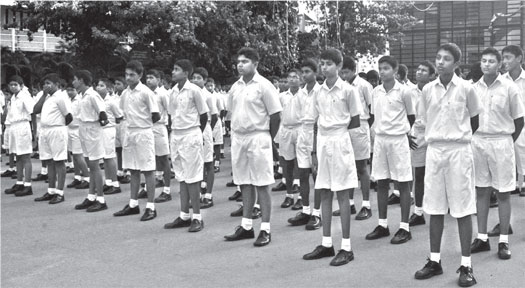 |
|
Morning assembly |
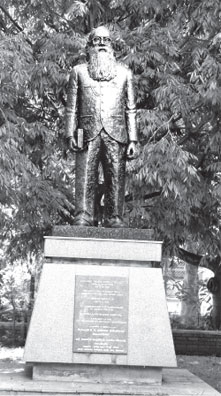 |
|
Statue of Col. Henry
Steele Olcott |
An Anandian is always fiercely proud of his school and his Motherland
to his dying day. Anandians were naturally in the forefront of the
independence struggle. It is also not surprising that a large number of
Anandians has made the Supreme Sacrifice in the defence of the Nation.
Their efforts have not been in vain, for we are free of terrorism now. A
monument to their heroism adorns the school compound.
Ananda is life’s great teacher for its students, past and present.
Shaped by the Buddha’s teachings and guided on the correct path of life
by eminent teachers, heroism, discipline, commitment, compassion,
generosity and altruism come naturally to Anandians. At Ananda, I
learned to share the pain of others, the joy of others. I learned to
give, I learned to share. The classroom is not only a repository of
theoretical knowledge at Ananda, it is also a treasure trove of moral
values. It is a tradition that has been going on for 125 years.
The present students of Ananda are indeed lucky that they are
witnessing the school’s 125th anniversary. By virtue of the fact that I
entered the school in 1981, I had a similar opportunity – witnessing,
and being a part of, the 100th anniversary of Ananda in 1986. It was a
momentous event, with a mega-exhibition by students as the centrepiece.
It was a very lucky coincidence. In fact, the Anandians who were in
school in 1986 still call themselves the Centenary Group.
The centenary celebration was a fitting tribute to all those who had
contributed to make Ananda what it is today, from Col. Olcott, C.W.
Leadbeater (the first principal 1886-1890) and Mudaliyar Tudor
Rajapaksha (who donated the land in Maradana where the College is
located) downwards. Among the other towering figures associated with
Ananda as Principals are Sir D.B. Jayatilaka, Fritz Kunz, P.De.S.
Kularatne, Dr. G.P. Malalasekara, L.H. Meththananda, Lt.Col. E.A.
Perusinghe and Col. G.W. Rajapaksha.
Academia to business
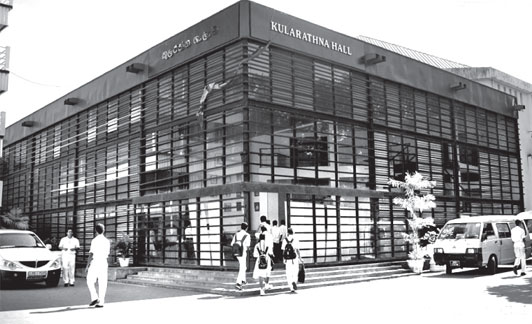 |
|
The Kularatne Hall |
The principals and a superb team of teachers helped mould students
who had made their mark here and around the world, in a variety of
fields from politics to engineering to academia to business. Among those
teachers were Ven. Kotagama Vachissara Thera, Dr. T.B. Jayah, C.
Suntharalingam, V. Thanabalasingham, Lionel Ranwala and R.S.
Gunawardane. Indeed, some of the most brilliant teachers at Ananda were
not Sinhalese, which again attests to Ananda’s multi-ethnic character.
Most students of Ananda, who had gone on to do great things for the
Motherland and the world, do continue to serve their school through the
Old Boys Association which renders a yeoman service and Anandians living
abroad have established Old Boys’ networks in key world cities. For
example, the renovation of the iconic Kularatne Hall would not have been
possible without the Old Boys’ worldwide fundraising campaign.
It is impossible to walk anywhere in the college premises without
getting a palpable feeling of history of the College and of the country
itself, as the Kularatne Hall testifies.
There’s the Leadbeater Hall that served as the library, the M. U.
Moore (Pasmahal) building (in memory of M. U. Moore, Principal
1910-1914), the statue of the founder, the hostel (that dates back to
1922 and which was a home away from home for thousands of students) and
the memorial to Ananda’s fallen heroes to name just a few of the
structures that afford a link to history.
Even a visit to the Ananda College grounds evokes a bit of sporting
history – it was here that many of the cricketing heroes of Ananda honed
their skills. After all, Ananda is not only part of history, but it also
makes history in every sphere.
Ananda has a very special mission in the country’s history. That is,
“to lead the sons of Ananda through a path of moral and intellectual
discovery, instilling Buddhist values and patriotic senses while
fulfilling National Educational Goals”.
This blends in ideally with its vision to “be a source of erudite
individuals imbued with Buddhist Values who contribute to the wellbeing
of the society”. That is a mission and a vision that Ananda will
continue not only for the next 125 years, but also for centuries hence.
The spirit of Ananda shall live inside the hearts and minds of all who
have been privileged to share its embrace.
|

